What is the Rapid Interactive screening Test for Autism (RITA-T) in Toddlers?
*The RITA-T Team will be updating the administration of item I: Mirror: Self-Recognition. Please check back on the course site or our website for updates as we continue to develop this. Updates to the training course and RITA-T material will be made accordingly. *
The RITA-T is a new Level 2 screening test. The RITA-T can be administered on:
- Young children identified at risk for ASD.
- Children who scored positive on a Level 1 screening test.
- Children whose providers have concerns about.
Examples of a Level 1 or universal include the MCHAT-R (Modified Checklist for Autism in Toddlers- Revised) that may or may not have been administered before the RITA-T. You can go here to learn more about the MCHAT-R.
Examples of children at risk include: siblings of a child already diagnosed with ASD, children born with higher risks for neurodevelopmental disorders such as ex-prematurely born children, children already identified with other delays and in Early Intervention Programs, or with genetic disorders known to be associated with ASD (such as Trisomy 21).
A Level 2 screener can be administered to this group of high risk children to differentiate between ASD and other delays. See the picture below. This will result in identifying the children who are really at risk for ASD and thus refer them in a faster way for more appropriate ASD evaluations. An interactive Level 2 test is preferred in this age group (18 months-36 months) as it directly triggers the early signs we are looking for rather than relying on history or observation, as these factors may be hard to recognize.
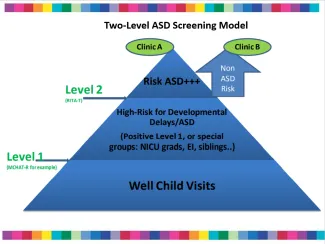
RITA-T Test Constructs Evaluation
The RITA-T includes nine semi-structured play-based presses that examine constructs that have been described to be delayed in children with Autism Spectrum Disorders (ASD). Each play-based press looks at the integration of 1 or 2 constructs, including: joint attention (JA), visual problem solving (cognition) human agency (HA) that is the precursor for the Theory of Mind, social awareness (SA), communication, and self-awareness.
Three items are also related to the developmental level of the child and coded C for cognition. Each press is coded and scored depending on the child’s response: the lower the score, the more typical the response. A total score is then calculated by adding the 9 individual presses scores.
A RITA-T manual and a RITA-T scoring sheet have been developed and validated. The RITA-T manual describes the administration and scoring of each one of the items. The manual and the RITA-T scoring sheet can be obtained and downloaded from the RITA-T online course package.
- Joint Attention (JA): Shared focus by two or more people on the same object or person
- Social awareness (SA): Ability to notice and respond to what is happening around you
- Awareness of Human Agency (HA): A precursor to theory of mind (the hand belongs to a person)
- Self-Recognition (SR): A well-known social cognition skill that emerges between 18 and 24 months
- Fundamental Cognitive Skill (C): “Naïve physics” (object permanence, color & shape constancy)
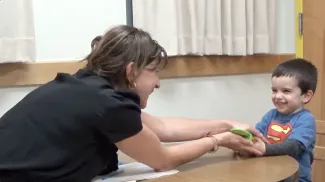
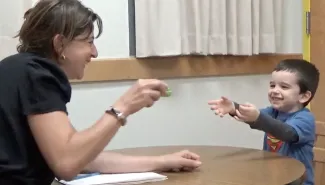
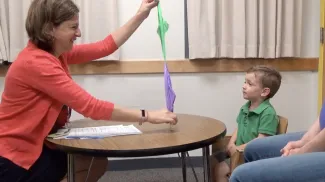
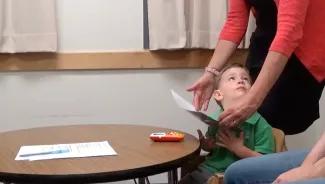
Test Details
- Reliable in 18-36 months olds
- Easy to train and learn; 5-10 minutes to administer and score
- Can be administered after a positive Level 1 test to identify those with real ASD risk
- Toddlers with high risk of ASD would not be delayed for diagnostic confirmation
- The training for reliable administration and scoring of the RITA-T is easily accomplished in about 3 hours of targeted training with a small group of clinicians
- The model would allow improved access and two different clinical pathways
- The RITA-T differentiates extremely well between toddlers with ASD and toddlers with Developmental Delay (DD) /Non-ASD
- Toddlers with no apparent developmental delay and toddlers with developmental or language delays, but with intact social communication skills, score comparably on the RITA-T
- The RITA-T correlates well with established diagnostic measures of ASD
- Early Interventionist and Early Childhood educators can then do MCHAT R/F and RITA-T
- Fits well into busy practice flow
